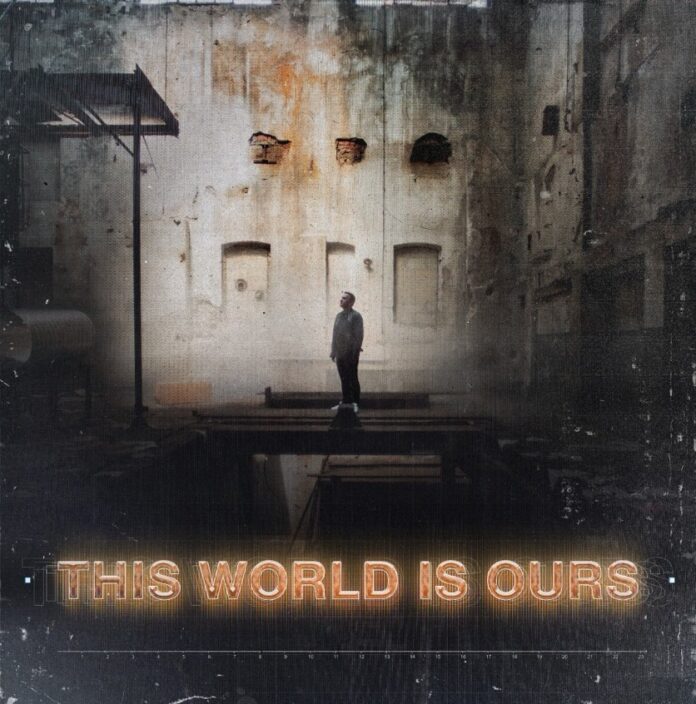Following Sony’s acquisition of Crunchyroll in 2021, and with the recent news that all Funimation titles will be merged into Crunchyroll’s line-up by the end of March 2022, there’s no better time to discuss some of the best anime shows available to stream on Crunchyroll that nonetheless deserve a bit more love.
While the upcoming spring anime premieres will be streaming exclusively on Crunchyroll, the following shows have unfortunately been largely forgotten by the anime community due to their age, or else never received the kind of attention they deserved to begin with. Running the gamut from slice-of-life comedy and drama to historical fantasy and mecha-themed sci-fi, here are some of the biggest hidden gems that Crunchyroll has to offer and what makes them such standout titles.
Boogiepop Phantom Is A Psychological Thriller Classic
In an unnamed Japanese city, five years after a succession of serial killings, high school students have once again started disappearing under mysterious circumstances. An urban legend, disbelieved and laughed at by most yet whispered uneasily about by others, points to a particular shinigami as the culprit -- a dark female entity known only as Boogiepop.
While the premise is relatively straightforward, the 2000 anime-original Boogiepop Phantom (Boogiepop wa Warawanai, literally Boogiepop Doesn't Laugh) is a dark urban fantasy series and psychological thriller filled with twists and turns, with its events told primarily through the eyes of an ensemble cast of high schoolers. Non-linear in fashion, its avant-garde visuals and music are very different from just about any other show out there, incorporating and paying homage to various aspects of mythology, philosophy and horror throughout its 12-episode run.
Stellvia of the Universe Pairs Sci-Fi Mecha With A Coming-Of-Age Drama
The year is 2356, and in order to protect Earth from the kind of harm it sustained 200 years ago from a nearby star going supernova, massive space colonies called Foundations have been built throughout the Solar System, including the Stellvia. Fulfilling her dream to see space with her own eyes, prep student Katase Shima leaves Earth for the Stellvia, where she begins training as a pilot and struggles to become accustomed to her new surroundings, friends and challenges.
A 26-episode anime original released in 2003, Stellvia of the Universe (Uchuu no Stellvia) accomplishes a laudable amount in its runtime without ever feeling forced or rushed. Combining comedy and drama with a strong slice-of-life feel and its mecha sci-fi setting, the series comes across as remarkably down-to-earth, in large part thanks to its extremely diverse and relatable cast -- most of whom easily transcend normal anime stereotypes through their surprising amount of depth and steady character development.
Daily Lives of High School Boys Showcases Average Boys Doing Not-So-Average Things
Three young men attending Sanada North Boys High -- Tadakuni, Tabata Hidenori and Tanaka Yoshitake -- are close friends who are constantly hanging out with each other during and after school. Each with their own distinct personality and character quirks, these utterly normal boys fill their days getting up to relatively innocent mischief and, in their minds at least, undergoing not-so-normal adventures.
Very much a satire of the “cute girls doing cute things” genre of anime (think Azumanga Daioh or Nichijou, complete with the odd absurdist or surrealist twist), Daily Lives of High School Boys (Danshi Koukousei no Nichijou) ran for 12 episodes in 2012. Purely episodic in nature, its excellent sense of timing and genuinely funny slapstick moments make this purely slice-of-life sketch comedy pack a fine punch. Simultaneously mundane and outlandish, the series will likely appeal to anyone who appreciates the kind of dumb-but-smart humor offered by shows like Gintama.
The Morose Mononokean Presents Its Own Spin On Yokai And Japanese Spiritualism
Ashiya Hanae is a normally energetic and optimistic young man, but an unexplainable and ever-worsening condition means he is becoming physically weak and drained. It turns out that a small and fuzzy yokai has attached itself to him and refuses to leave. When Hanae comes across a flyer advertising a yokai-expelling exorcist, he calls the number and soon meets Abeno Haruitsuki, a Mononokean who reluctantly helps Hanae -- and upon finding out that he cannot afford to pay, demands that he become Abeno’s employee.
The Morose Mononokean (Fukigen na Mononokean) aired for two 13-episode seasons in 2016 and 2019 respectively, and both skillfully combine the supernatural and Japanese mythology into a fairly lighthearted, often gently comedic story with a modern-day setting. Despite Hanae and Abeno being high school classmates, The Morose Mononokean is less a high school show and more a (mostly) easygoing romp involving other yokai and Abeno’s connection with the Underworld, making it unique yet easily digestible.
We Rent Tsukumogami Was An Unassuming Standout Of Its Season
In Edo’s Fukagawa district, siblings Okou and Seiji run a rental shop called Izumoya, where customers can borrow everyday objects such as bedding, clothing, accessories and knick-knacks rather than buy them, given the area’s potential threat for fire and flooding. However, the shop also contains tsukumogami -- innocuous-looking household items that have turned into good-natured spirits, but which nobody but the siblings can see or hear and which are sometimes themselves lent out to clients.
Premiering in 2018, We Rent Tsukumogami (Tsukumogami Kashimasu) is a supernatural slice-of-life series set in historical Japan. Pleasantly low-key yet visually vibrant, the work utilizes yokai in a very specific way, differentiating itself from the plethora of other yokai-centric anime titles out there. Moreover, as its drama and occasional moments of romance don’t involve anything too high-stakes, We Rent Tsukumogami is an overall relaxing and charming show that stands to appeal to a wide audience, even viewers who don’t necessarily watch a lot of anime.
About The Author

